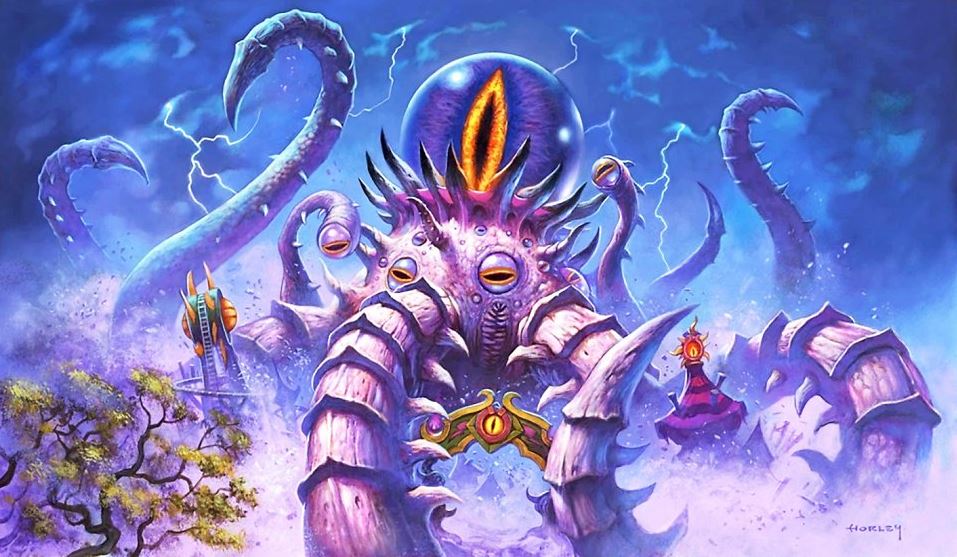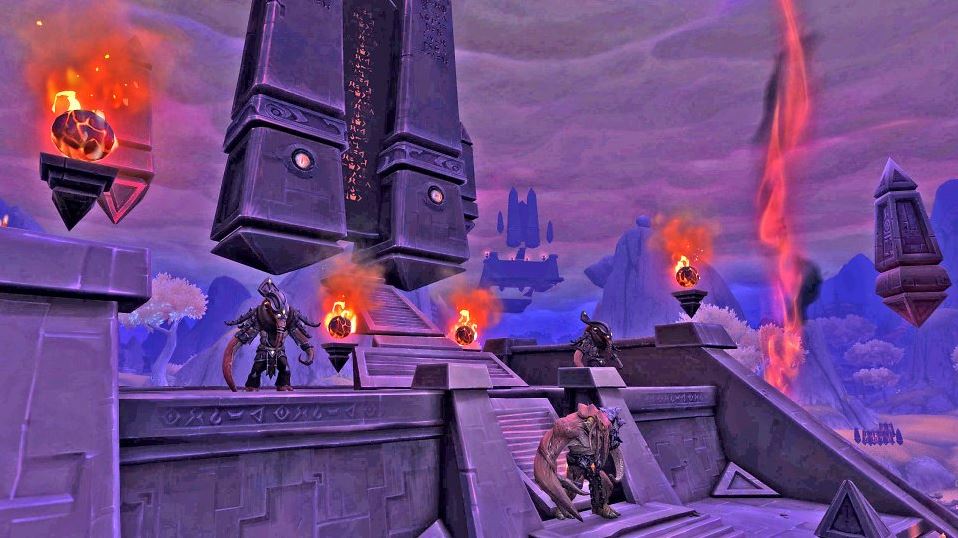The fascination with Old Gods isn’t confined to Azeroth’s Twilight’s Hammer Clan; it infiltrates the very essence of players behind the characters. The mere mention of their potential appearance sparks a frenzy of forums. Theories sprout like wildfire, debates arise on G’huun’s nature, and the cosmic entity hierarchy. But amidst this cosmic hierarchy, why are we fixated on the middle management tentacles rather than the enigmatic higher-ups quietly observing us from the cosmos?
Please follow us on Twitter and Facebook
Unraveling Cosmic Horror in WoW
With the fall of Aberrus and pervasive hints of Old Gods’ interventions in Dragonflight, it’s time to delve into the mechanics behind the oft-mentioned “cosmic horror.” We’ll explore its origin, intent, and the complexity of its integration into WoW. We’ll highlight instances of lackluster cosmic horror while celebrating the rare exemplary instances within the game. But that’s not all—prepare for a dissenting viewpoint, advocating for a transformation of cosmic horror into an action-packed, vibrant trope suitable for WoW.
Read Also: Exclusive Mount Returns As Prime Gaming Gift For Wow Enthusiasts
Provoking Palates: The Unthinkable Taste of Old Gods
As we embark on this journey through the forbidden corridors of cosmic horror, there’s a daring bonus. It involves contemplating the tantalizing taste of each Old God and the proper culinary preparation. So, settle in, don your spectacles, and join us on this frothy exploration into WoW’s cosmic terror… if you dare.

Lovecraftian Origins
To comprehend cosmic horror’s allure and its tenacious grip on WoW, a literary detour is in order. H.P. Lovecraft birthed cosmic horror, introducing a brand of terror that confronts the abrupt realization of our cosmic insignificance. His tales unravel the insignificance of humanity, unveiling entities far older and more knowledgeable about the universe. The absence of benevolent or malevolent intentions, the sheer presence of these beings, shatters minds and bodies alike. Lovecraft’s narratives embody an all-consuming, pessimistic horror, where ordinary individuals destined for asylums or graves— if fortune favors them—become protagonists, not heroic victors.

Lovecraft’s narrative roots stem from his childhood fears, ignited by his grandmother’s passing at the tender age of five. His mourning attire and haunting dreams of “faceless, gaunt figures, all in black” sowed the seeds for his later literary endeavors.
Read Also: WoW: A Quick Guide To The Demonology Warlock In Dragonflight Patch 10.2
Beyond Lovecraft: Predecessors of Cosmic Dread
Before Lovecraft, echoes of cosmic horror resonated in literature. Samuel Taylor Coleridge’s “Ballad of the Old Sailor,” Arthur Machen’s “The Great God Pan,” and Robert W. Chambers’ “The King in Yellow” each wove tales of the unknown, the overpowering, and the ancient. These concepts, woven into Lovecraft’s oeuvre, portray him not as the inventor of cosmic horror, but its masterful sculptor—refining it for broader consumption.
Yes, Lovecraft’s trademarks—slime, tentacles, and unfathomable entities—added a visceral layer to his cerebral narratives, captivating a wide audience. The fusion of disgust and existential horror rendered his tales eerily tangible, heightening their impact on readers.
Read Also: WoW: That’s Never Happened Before – Blizz Implements New Type Of Transmog Shoulders





